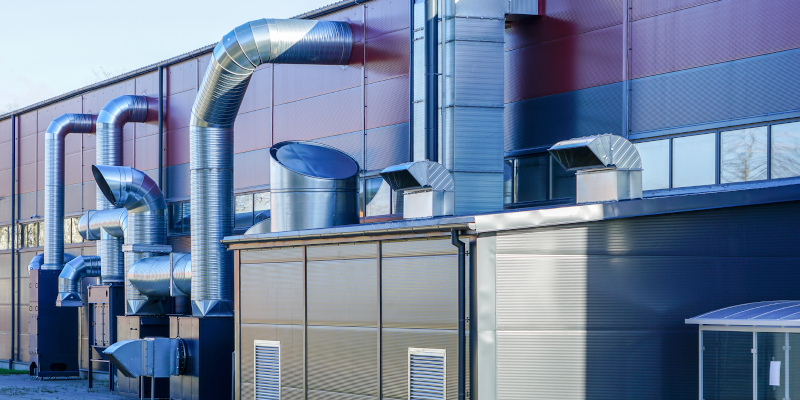
An essential part of keeping a building comfortable for its occupants is a commercial HVAC system and, as a component of that system, the ductwork which ensures the proper transfer of air. Your ducts are responsible for moving heated and cooled air from a furnace, boiler, air conditioner, or heat pump into the internal spaces in your building. Knowing how they operate will help you understand how to maintain their efficiency so that you get the most out of your commercial HVAC system.
Powerful fans help push the heated and cooled air through the ductwork, where it will exit through vents. This means that if there is air loss at connecting points, you will notice a higher electric bill as your commercial HVAC system has to work harder to make up for the inefficiency. When commercial HVAC ductwork is installed, it needs to be properly sealed and insulated to prevent this from occurring. There are some types of ducts that need insulation and your installer should know whether this will be necessary for your building.
Unlike a residential system, commercial HVAC systems are often located on roofs which makes it easier to access and perform maintenance work. The ductwork runs throughout the interior of your building. Technicians have more training to be able to offer installation, maintenance or cleaning services since commercial HVAC systems are much more complex. Ductwork is available in a few different materials including stainless steel and aluminum, and custom ductwork can address challenging installation requirements.
Finding a service provider that understands the needs of your building will ensure that your commercial HVAC system and its ductwork operate with maximum efficiency to keep everyone inside comfortable.






